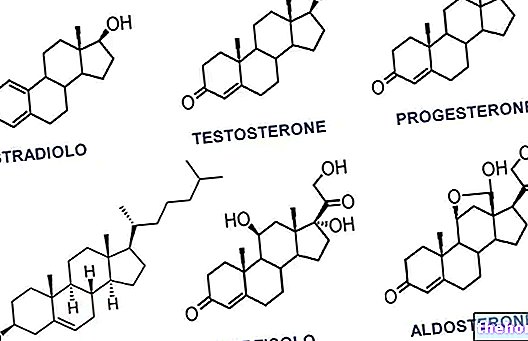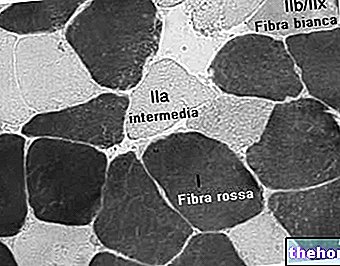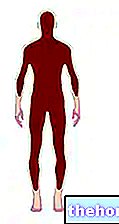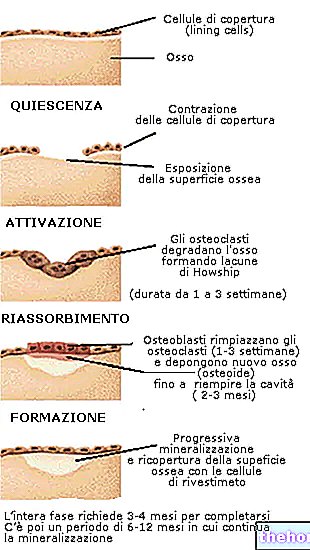
Cholesterol is divided into endogenous and exogenous: the first is produced by the body itself (in particular by the liver and intestine); the second is taken, instead, through food.
The role of cholesterol synthesis is mainly entrusted to the liver, to which the fats contained in food arrive from the intestine after the digestive process.
Let's see in detail how the absorption of cholesterol introduced with the diet takes place.
occurs at the level of the small intestine, especially in the duodenum and jejunum, proximal and intermediate tracts of this segment of the digestive tract.
Of the 300 mg of cholesterol that we introduce approximately every day with food, only 50% is absorbed. This percentage varies significantly in relation to cholesterol reserves; according to homeostatic laws, in fact, enteric absorption is lower the more abundant are the body's cholesterol reserves and vice versa.
The amount of cholesterol from food in the duodenum is associated with that contained in the bile, equal to about 1000 mg per day. Therefore, the body absorbs about 650 mg of cholesterol per day (50% of 1300), while the remainder is eliminated in the faeces.
Almost all of the circulating triglycerides / fatty acids derive from food absorption; the cholesterol introduced with food instead represents only 20-30% of blood cholesterol, while the remaining percentage comes from endogenous production by the liver. Also in this case the extent of hepatic synthesis depends on the food intake: the more consistent this is, the lower the endogenous production and vice versa.
Generally speaking, it is estimated that the absorption of cholesterol in the intestine cannot exceed one gram per day.
Although the percentages just described can vary significantly from individual to individual, it is clear how dietary cholesterol affects cholesterol levels to a modest extent. In fact, in addition to the aforementioned physiological absorption limit, the "increase in blood cholesterol, resulting from the high dietary intake, determines an" inhibition of the 3-hydroxy-3-methylglutaryl-CoA reductase (HMG-CoA reductase) enzyme necessary for its endogenous synthesis; consequently, there is a homeostatic system capable of adapting the endogenous synthesis to intestinal absorption.
Simplifying: in conditions of cholesterol deficiency, the body responds by increasing its absorption and endogenous synthesis, and vice versa.
In foods, cholesterol is present both in free form and in esterified form, i.e. bound to a fatty acid. At the intestinal level, this bond is split by an esterase present in the pancreatic juice, since only free cholesterol can be effectively absorbed by the intestinal mucosa.
Thanks to the intervention of bile, free cholesterol is emulsified into micelles, lipoprotein droplets rich in phospholipids, fatty acids, bile salts and monoglycerides. Micellar cholesterol can therefore passively cross the aqueous phase in contact with the cell membranes of enterocytes. inside which it is partially reesterified by the enzyme acyl-cholesterol-acyl-transferase (ACAT2) and incorporated into the chylomicrons. These lipoprotein aggregates are conveyed into the lymphatic circulation and from there to the blood, which transports them to the liver where they are processed and distributed to the various tissues.
A part of the cholesterol absorbed by the enteric mucosa is not incorporated in the chylomicrons (rather slow process), but excreted by the enterocyte in the intestinal lumen, then removed with the faeces. This percentage is clearly high in the case of phytosterols.
, is represented by plant sterols or phytosterols. These substances, present in the diet in concentrations similar to cholesterol, are however absorbed in much lower percentages, in the order of 2% (excessive absorption is the basis of a disease known as Beta-sitosterolemia).At the level of the intestinal mucosa, cholesterol competes with phytosterols for uptake by enterocytes; consequently, the higher the percentage of phytosterols in the diet, the lower the intestinal absorption of cholesterol. This strategy, embodied in the intake of plant sterol-based supplements, is used to decrease blood cholesterol levels in the presence of hypercholesterolemia, with all the limits linked on the one hand to the risk of excessive absorption of phytosterols in predisposed subjects, and on the other, the low impact of dietary cholesterol on plasma levels.
Dietary fiber
Dietary fiber, especially soluble fiber, also helps to reduce intestinal absorption of cholesterol, through the formation of a gel that incorporates various nutrients, decreasing and slowing the absorption of bile salts and cholesterol.
Medicines
A drug called ezetimibe works by hindering the absorption of cholesterol, while the active ingredient cholestyramine slightly inhibits the absorption capacity of cholesterol by preventing that of bile acids.
Diet
The dietary limitation of sugars and saturated fats is very important, which have an impact equivalent, if not even greater than cholesterol, on the blood concentrations of this lipid. In fact, saturated fatty acids and sugars increase the availability of acetyl-coA (common intermediate in the oxidation of carbohydrates and lipids) necessary for the synthesis of cholesterol in the liver cells.
Consequently, in the presence of hypercholesterolemia it is advisable to limit the intake of saturated fatty acids to percentages lower than 7% of the energy introduced, reducing as much as possible the intake of trans fatty acids and limiting that of cholesterol to no more than 300 mg per day.
This result is obtained by preferring lean meats and vegetable protein sources, preferring skimmed milk and limiting the consumption of its higher fat derivatives, but also minimizing the intake of partially hydrogenated lipids present in many margarines and packaged products (sweet and savory snacks , and bakery products in general). At the same time it is important to minimize the income from beverages and food products with added sugar.




























